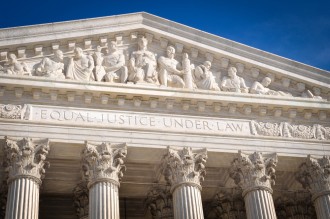September 22, 2017
Employee Residence is Not the Defendant’s Regular and Established Place of Business
In In re: Cray Inc., 2017-129 (September 21, 2017), the Federal Circuit granted Cray’s Petition for Writ of Mandamus and directed the Eastern District of Texas to transfer a patent infringement action pursuant to 28 U.S.C. §1406(a). The Federal Circuit found that the district court misinterpreted the scope and effect of its precedent in determining that Cray maintained “a regular and established place of business” in the Eastern District of Texas within the meaning of 28 U.S.C. §1400(b).
Although Cray did not rent or own an office or any property in the Eastern District of Texas, it allowed Harless and Testa to work remotely from their respective homes in the district. The district court found that activities of Harless working from his home as a “sales executive” made his personal residence Cray’s regular and established place of business in the district.
The Federal Circuit found that although the law was unclear and the error understandable, the district court misunderstood the scope and effect of our decision in Cordis, and its misplaced reliance on that precedent led the court to deny the motion to transfer, which we find to have been an abuse of discretion.
The only question before the court was whether Cray has a “regular and established place of business” in the Eastern District of Texas within the meaning of §1400(b). The Federal Circuit agreed with the district court that “the regular and established place of business standard requires more than the minimum contacts necessary for establishing personal jurisdiction or for satisfying the doing business standard of the general venue provision.”
The Federal Circuit said that:
The statutory language we need to interpret is “where the defendant … has a regular and established place of business.” 28 U.S.C. § 1400(b). The noun in this phrase is “place,” and “regular” and “established” are adjectives modifying the noun “place.” The following words, “of business,” indicate the nature and purpose of the “place,” and the preceding words, “the defendant,” indicate that it must be that of the defendant. Thus, § 1400(b) requires that “a defendant has” a “place of business” that is “regular” and “established.” All of these requirements must be present. The district court’s four-factor test is not sufficiently tethered to this statutory language and thus it fails to inform each of the necessary requirements of the statute.
In deciding whether a defendant has a regular and established place of business in a district, no precise rule has been laid down and each case depends on its own facts. However, the analysis must be closely tied to the language of the statute. The first requirement is that there “must be a physical place in the district.” The second requirement for determining venue is that the place “must be a regular and established place of business.” Sporadic activity cannot create venue. Finally, the third requirement when determining venue is that “the regular and established place of business” must be “the place of the defendant.” Thus, the defendant must establish or ratify the place of business. It is not enough that the employee does so on his or her own. Relevant considerations include whether the defendant owns or leases the place, or exercises other attributes of possession or control over the place. In the final analysis, the court must identify a physical place, of business, of the defendant.
The Federal Circuit stressed that no one fact is controlling, but that taken together, the facts cannot support a finding that Cray established a place of business in the Eastern District of Texas. Thus, venue cannot exist there under § 1400(b).




































